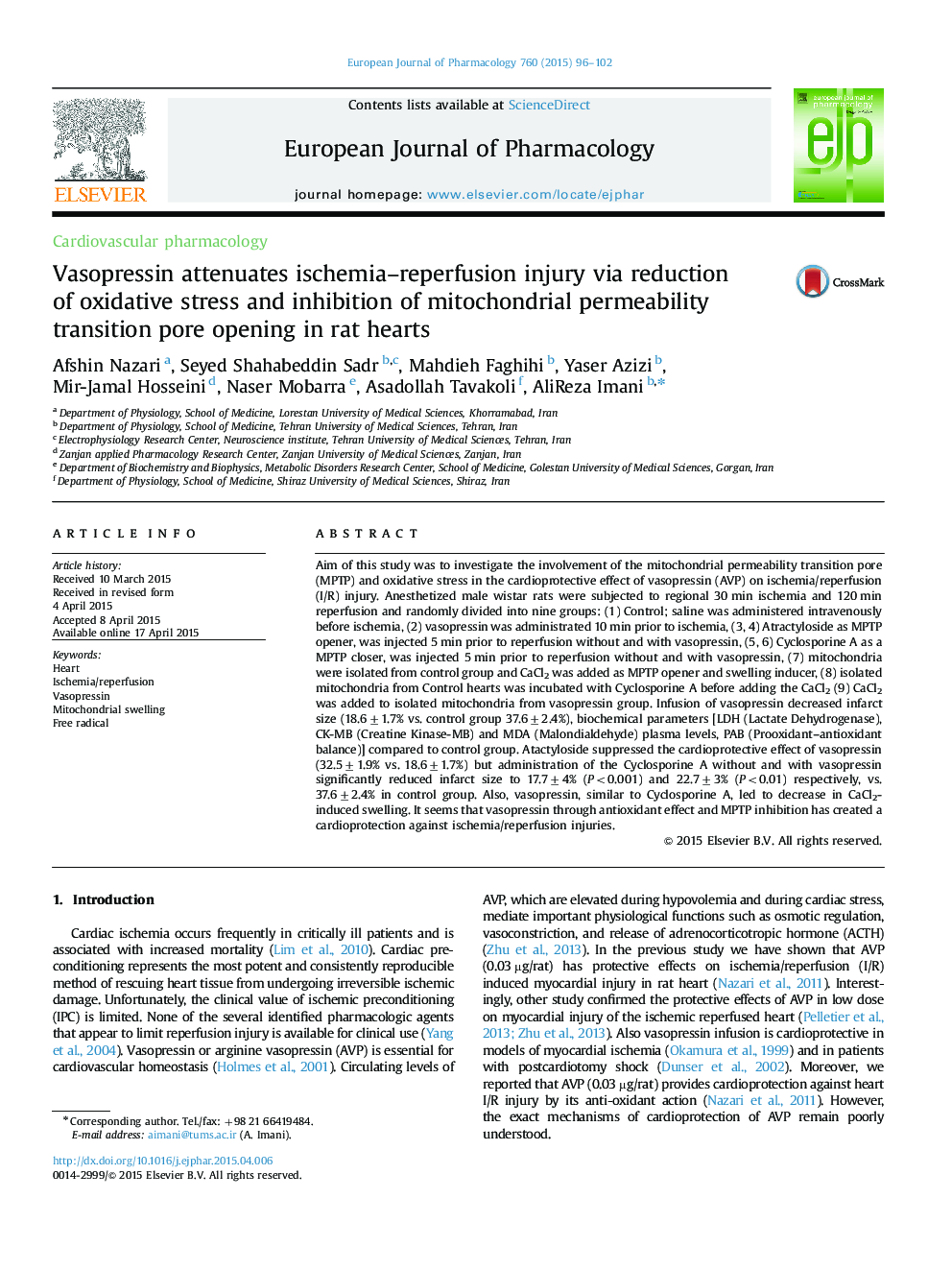| Article ID | Journal | Published Year | Pages | File Type |
|---|---|---|---|---|
| 2531441 | European Journal of Pharmacology | 2015 | 7 Pages |
Aim of this study was to investigate the involvement of the mitochondrial permeability transition pore (MPTP) and oxidative stress in the cardioprotective effect of vasopressin (AVP) on ischemia/reperfusion (I/R) injury. Anesthetized male wistar rats were subjected to regional 30 min ischemia and 120 min reperfusion and randomly divided into nine groups: (1) Control; saline was administered intravenously before ischemia, (2) vasopressin was administrated 10 min prior to ischemia, (3, 4) Atractyloside as MPTP opener, was injected 5 min prior to reperfusion without and with vasopressin, (5, 6) Cyclosporine A as a MPTP closer, was injected 5 min prior to reperfusion without and with vasopressin, (7) mitochondria were isolated from control group and CaCl2 was added as MPTP opener and swelling inducer, (8) isolated mitochondria from Control hearts was incubated with Cyclosporine A before adding the CaCl2 (9) CaCl2 was added to isolated mitochondria from vasopressin group. Infusion of vasopressin decreased infarct size (18.6±1.7% vs. control group 37.6±2.4%), biochemical parameters [LDH (Lactate Dehydrogenase), CK-MB (Creatine Kinase-MB) and MDA (Malondialdehyde) plasma levels, PAB (Prooxidant–antioxidant balance)] compared to control group. Atactyloside suppressed the cardioprotective effect of vasopressin (32.5±1.9% vs. 18.6±1.7%) but administration of the Cyclosporine A without and with vasopressin significantly reduced infarct size to 17.7±4% (P<0.001) and 22.7±3% (P<0.01) respectively, vs. 37.6±2.4% in control group. Also, vasopressin, similar to Cyclosporine A, led to decrease in CaCl2-induced swelling. It seems that vasopressin through antioxidant effect and MPTP inhibition has created a cardioprotection against ischemia/reperfusion injuries.
